Image
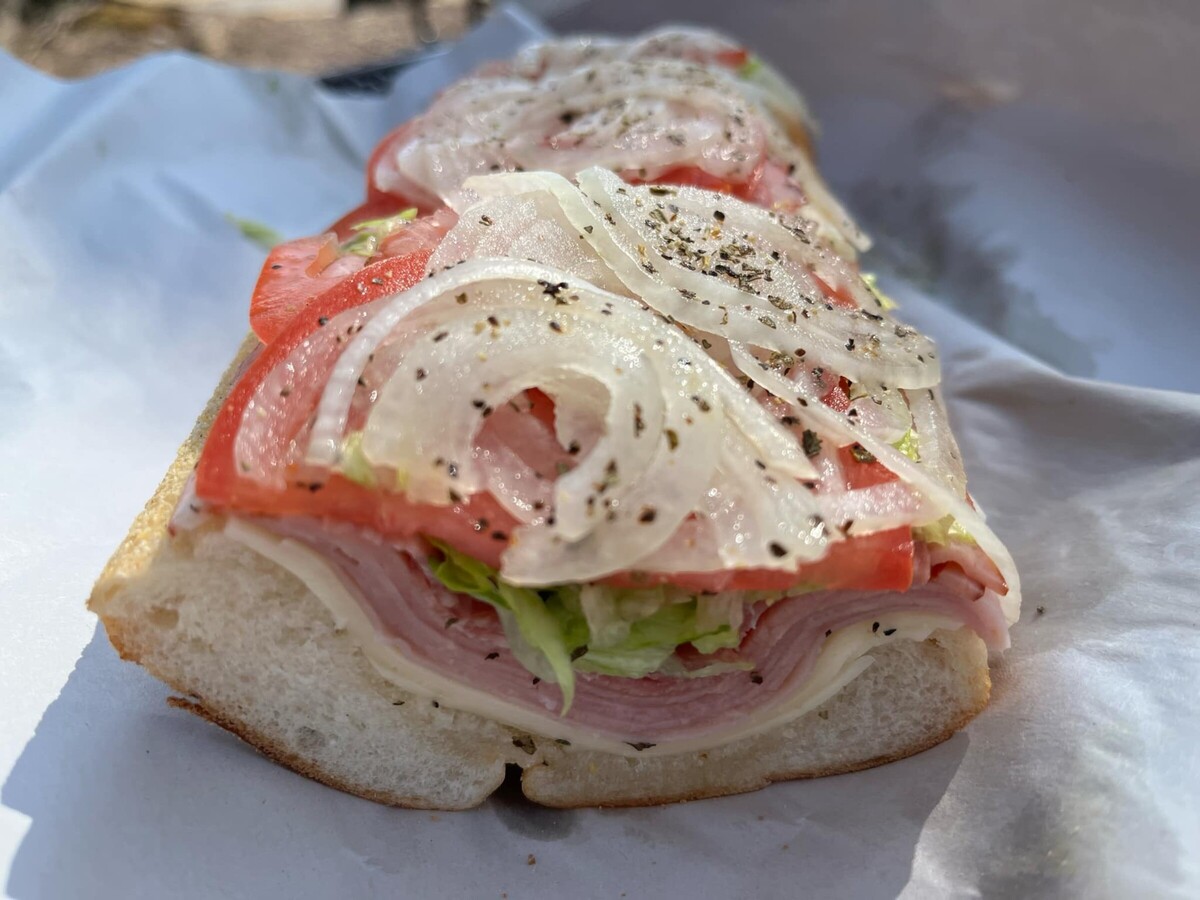
by Mike Strzelecki*
When I left Boyertown in the mid-1980s, I knew that I would miss my friends, and figured I would long for the trout streams and hiking trails on the town’s perimeter. What I did not realize is how much I would miss eating a really good hoagie.
I live two hours south of Boyertown, in a busy Maryland suburb. Somewhere between Boyertown and my town is an impermeable boundary through which apparently no hoagie knowledge or artisanship may pass. Our local Italian Market offers a hoagie on spongy bread with too much oil, resulting in you biting into a handful of Italian-tasting paper mache. Our corner deli overstuffs the ingredients into a short roll, sending rolled meats and loose veggies shooting across the baker’s paper on the opening bite. Too many cases of hoagie interruptus.
After four decades of subpar subs, it was time to revisit my Boyertown hoagie roots.
For the mission, I called into action two friends. Todd Kuszyk is a hoagie connoisseur of 60 years and frequent patron of the local hoagie haunts. Jane Stahl is my usual culinary compadre and brings to the table a refined palate that can discern subtle differences between ingredients. They were my cohorts in carbohydrates.
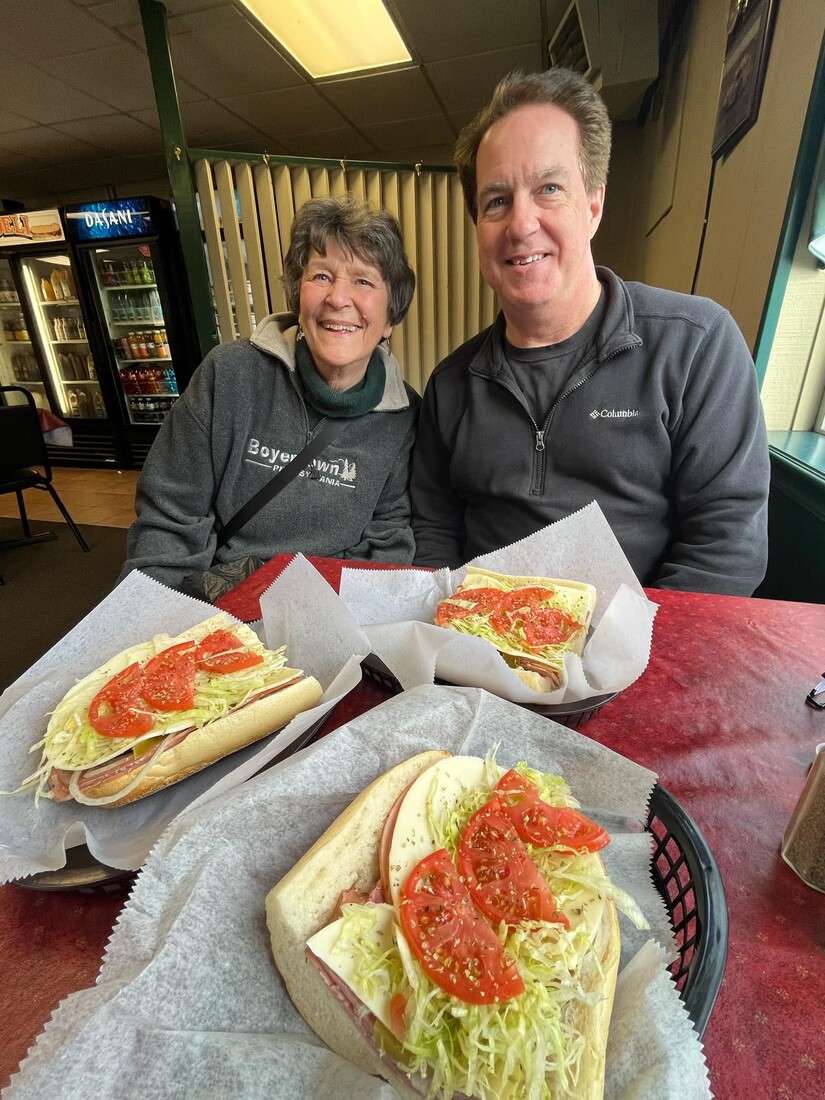
Our first order of business was to define a hoagie. This exercise proved frustrating. In doing research, I sank neck deep in sandwich lexicon. Subs, heroes, grinders, hoagies, po boys, blimpies, torpedoes, zeppelins. If you happen to be from Yonkers, New York….wedges. The list goes on.
Regionalism only roils the waters. In New England, subs are called grinders, but here, grinders are heated sandwiches. I joined the Facebook group Hoagie Gurus to tap into more expert opinions. They waste enormous amounts of bandwidth arguing this very topic. The many voices only widened the hoagie-definition rift.
For this exercise, a hoagie consists of Italian meats, cheeses, and veggies, served on a long sub roll. There must be three or more kinds of meats on the sandwich. The most traditional options are ham, salami, capicola (cured pig’s neck or shoulder), prosciutto (from the hind legs of a pig), and mortadella (a sliced sausage made from pig’s jowl). The cheese is usually provolone, but others are welcome. Veggies are generally limited to lettuce, tomatoes, and onions, although I’ll keep quiet if you choose to slip some extracurriculars into the sandwich like spinach or hot peppers.
Most hoagies contain some form of oil, maybe some vinegar, and oregano should be a requirement. What about mayo? Certain hoagie fundamentalists say no way. Others may look the other way if you just want to dab some on. The one thing all experts from Hoagie Gurus agree on is that mustard is right out.
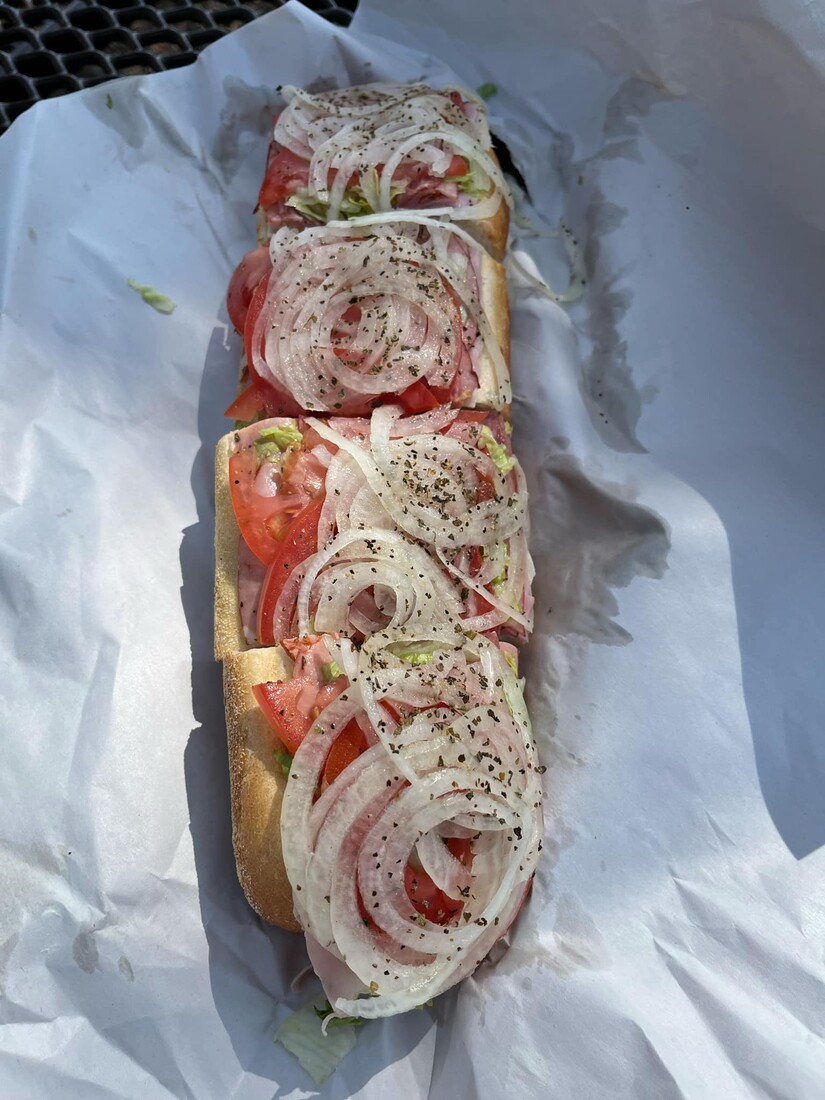
Our second order of business was to explore how the hoagie got its name. There are apocryphal tales floating around online. One involves a sandwich shop owner named Hogan. Another involves a deli owner who said you have to be a hog to finish one of his sandwiches. But the one that - at least in my romantic eyes - seems likeliest involves a Philadelphia shipyard. It was situated on Hog Island and operated during World War One. It was staffed with hundreds of Italian immigrants. For lunch, they often brought Italian sandwiches on a submarine roll that included shaved meats and cheeses, veggies, and oregano. The laborers were referred to as Hoggies after the island’s name, and their luncheon sandwiches took on the same name. Over time, the inflective accent of Philly citizens converted the word to hoagies.
Our third order of business was to consume vast quantities of hoagies. We wanted to convert research and knowledge into calories. The plan was straightforward. We scoured the internet to find eight of the best hoagie shops in Boyertown and outlying regions. We read critical reviews from newspapers, pored over Yelp and Tripadvisor reviews, and kept a close watch to what the good folks at Hoagie Gurus were saying. We also queried locals for their opinions.
Our hoagie-combing led to eight hoagie delis standing tall above the rest. Four were in the outlying areas of Boyertown, and we hit them all for an extended lunch on day one. Four were in the immediate Boyertown area, and we saved them for a moveable day two feast.
Day one was chilly and breezy. Our first stop was Tony's of West Reading, on Penn Avenue. It’s located in a low-slung building on a vibrant street, and has two picnic tables squeezed onto the sidewalk for “dining in.” The atmosphere was abuzz; a car drove by rocking reggae music. Tony, himself, tattooed and gregarious, hung out the window chatting us up.
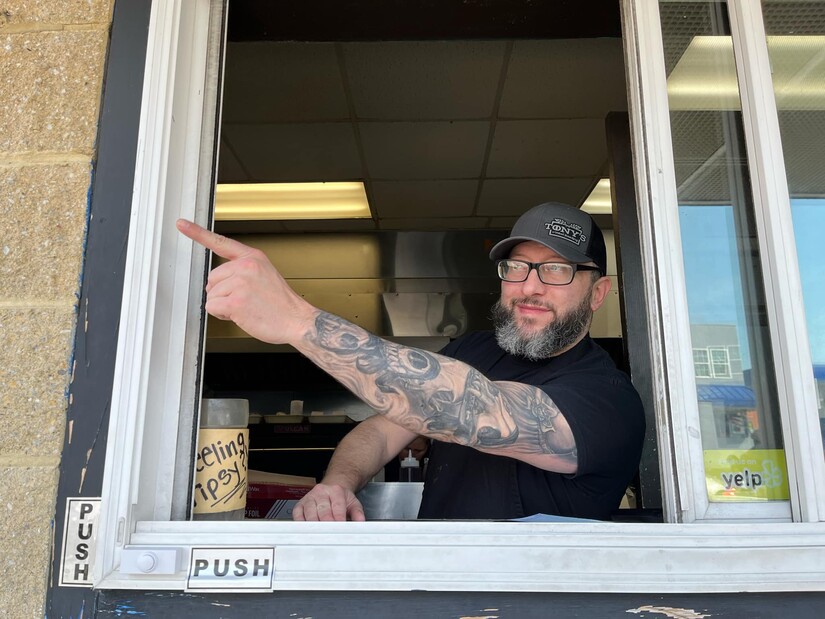
Tony is the child of Italian immigrants, and grew up watching cooking shows rather than cartoons. He was destined to serve top-flight sandwiches. “Hoagies start with really good bread and excellent lunch meats,” said Tony. “The imported meats are probably healthier for you. And a couple roasted red peppers thrown in probably hurt no one either.”
Tony swept his hand across the urban landscape, saying he has to serve great food since he is competing against 40 other eateries in his immediate area.
Tony’s hoagie sported a hearty, sesame seed roll - a deviation from the more traditional hoagies of my youth. The sesame seeds added flavor and texture to the sandwich. The hoagie was particularly flavorful, with bursts of extra sharp provolone cheese making itself known. The ingredients ratio was on point and the sub roll was able to contain its fill without spillage. We agreed the sandwich to be stellar.

Todd noted that Tony’s hoagie deviated from the more conventional hoagies of our youth, and likened it to eating Uno’s Pizza. “Uno’s is unlike traditional pizza. It’s more like a gourmet pizza and more of a unique experience. Tony’s hoagie was different from hoagies that I am used to, but it had something special that made it more flavorful and something to talk about.”
Next, we journeyed crosstown to Screpesi’s Sandwich Shop, on Lancaster Avenue. Screpesi’s was a mandatory stop on our hoagie tour for reasons of nostalgia. “I remember back in high school, when we were looking for something to do, my boyfriend and I would drive up to west Reading and get ham and roll sandwiches at Screpesi’s,” recalls Jane. “That was part of our Sunday afternoon. It was just a fun time and provided some great memories.”
When I mentioned to my mom that we had Screpesi's hoagies, she remembered her many visits there as well - as a nursing student in Reading.
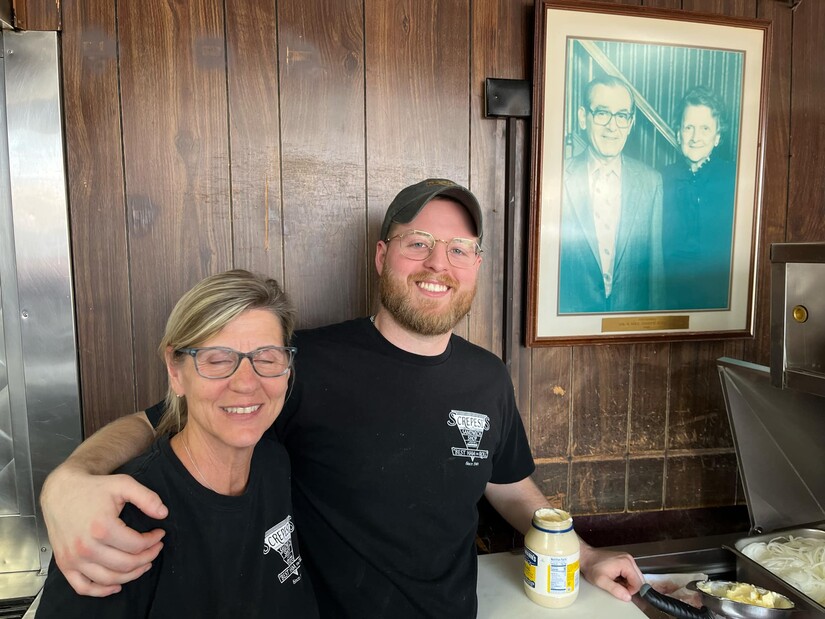
Screpesi’s opened its doors in 1949. They are currently in their third generation of family members owning and running the shop. Their stated mission is to not reinvent the wheel when it comes to fantastic sandwiches, but to keep true to how their grandfather constructed his first Screpesi subs.
The hoagies were outstanding. Todd noted the perfect amount of oil and vinegar on the sub, and Jane grooved on the sweet pepper lining and perfect amount of tomatoes. As a nod to fond memories, Jane grabbed a ham and roll sandwich on the way out, which we shared in the car.
Our third stop proved to be our most surprising. Brunish’s is literally in the basement of a rowhouse on a sidestreet, in downtown Pottstown. I have seen many cliches describing Brunish’s: “hole-in-the-wall,” “institution,” “diamond-in-the-rough.” All are fitting. You may need to duck your head to get in the door, and the service area is dark with a low ceiling - just like a rowhouse basement.
But Jane put it best. “At Brunish’s, ambiance takes a back seat to food quality.”
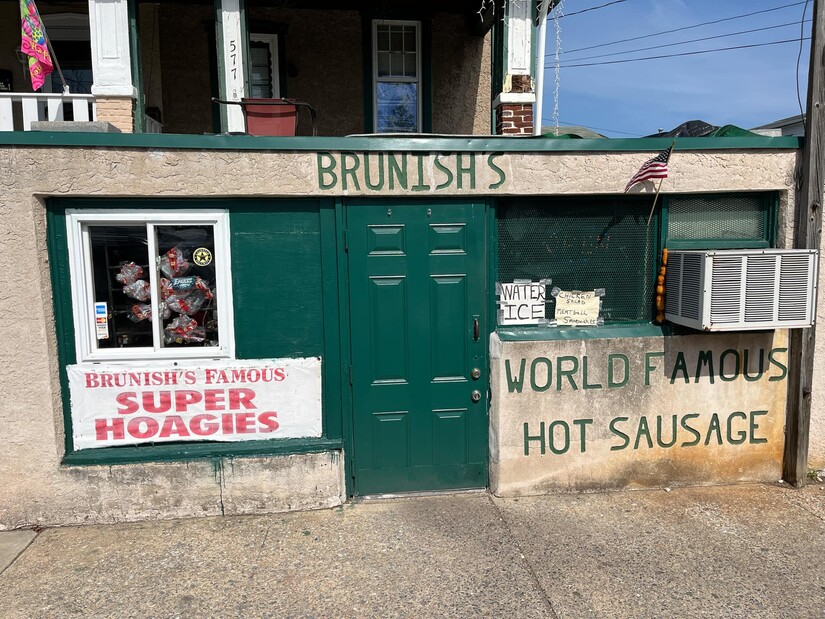
The hoagie was outstanding. Todd bit into his portion and declared that it tasted like home. He said he would return with friends. They perfected the combination of ingredients and the flavorful meats stood out. Some sub shops tend to under-oil their wares, but Brunish’s found the sweet spot.
Dan Brunish, the owner, was our server. He told us how his grandfather opened up in 1937 as a small grocer, but began serving sandwiches and snacks in 1955. He said they may have been the first store in the county to serve hot hogs on the go, a precursor to the modern convenience store. Brunish’s has an almost cult-like following: hoagie aficionados from around the country have heard of it, but many local Pottstownians have not.
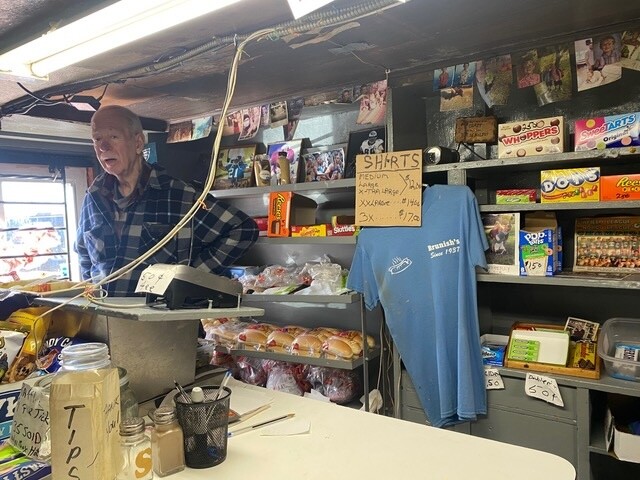
Brunish’s is most famous for its hot Italian sausage sandwiches. While waiting for our hoagie to be made, we conjured up some stomach space and split one of the sausages. It was outstanding, possibly better than any hoagie we partook in that day. We actually returned the next day for a few more hot sausage sandwiches.
Our final stop on day one was Sonny’s Italian Deli, in Limerick. Sonny was chatty and discoursed on its many menu options. Traditional fare is not the game here. Sonny’s subs offer variety - some having unusual veggies, others with chunks of cheese instead of thin slices. Jane appreciated the well thought-out combinations and options in Sonny’s subs.
We ordered the “9th Street Italian” that featured sharp provolone chunks, a generous portion of roasted red peppers, oil, vinegar, and dry herbs. It was served on a hearty sesame-seeded roll. The hoagie was excellent; Sonny’s was a place we agreed we would readily return to.
Todd offered, “When I want to impress friends from out of town with a hoagie they will remember, I will take them to Sonny’s. The roll was perfect - not too hard, not too soft. My favorite roll.”
We ended day one fully satiated. Our goal that night was to make room for four more hoagies on day two.
The second day saw us lunching at four hoagie shops in the immediate Boyertown area. We began at Dan’s Deli, north of town on Route 73. When you bite into a great hoagie, you can see it immediately in the person’s eyes. We all commenced our first bite in unison and all three sets of eyebrows raised highly, a tacit nod to that we knew we were tasting hoagie perfection.
Dan’s hoagies found the ideal combination of ingredients, each a well-choreographed dance with no ingredient hogging too much of the limelight. Todd believes that onions make or break a hoagie, preferring his thinly sliced. He found the onions here exemplary. Jane remarked on the establishment’s ambiance and the overly friendly staff.
Next up was Carmelo’s Pizza and Italian Ice, on Philadelphia Avenue. Carmelo’s showed us that each hoagie brings something different to the table. Their hoagie was excellent and very traditional, but also seemed to include a flavorful unique sauce. The restaurant just underwent a total renovation, and features a lovely eating area. Todd found the hoagie to be very traditional, reminiscent of his youth. Jane mentioned that the owner of Carmelo’s was recently featured on her B Inspired podcast, and is a good source to learn about the eatery’s history and the owner’s motivation.

Our third Boyertown stop was at Little Gio’s, in Gilbertsville. It was tough to differentiate between their hoagies and others tasted in the immediate Boyertown area. All were made with similar rolls and similar quality ingredients, and all were tasty and excellent. Even on fully sated stomachs, we found joy in lunch meats and cheese. There was no inside seating in Little Gio’s, so we dined while sitting on a planter in the parking lot, gabbing with passers-by. The hoagie has always been considered a more social food.
Our final stop was at Wawa. In my various food journey’s, I stray from chain restaurants, preferring to seek the more individualized and loving touch of local artisans and food concepts. But, come on….Wawa is hoagie central and I have been a patron for years.
Wawa subs are beyond acceptable, they are excellent. And whereas the other delis on our journey offered their hoagies at prices ranging from $10 to $16 dollars, my Wawa hoagie was procured for $6, on special. The rolls are excellent, the customization options appeal to my more healthy nature which enjoys spinach on subs, and the hoagies are packed perfectly to saturation without any spillage-causing excess.
Wawa subs were certainly not the best on our adventure, but their bang-for-the-buck appeal is nonpareil.
Hoagie-palozza was finally finished.
Our final order of business was to determine what makes a hoagie great. We queried the hoagie-builders along our journey. Most spoke of super-fresh ingredients, some saying the meats and veggies should not even be sliced until the sandwich is made. And meats and cheeses should always be sliced thinly to release the flavors (more surface area equals sharper flavors). A few spoke of how the sandwich should be constructed to keep the bread crusty and the flavors distinct.
What we found on our trek was that, in most delis, the owners were present and helped make the sandwiches. They all exuded passion and were proud of their creations and how much joy a simple concoction of Italian ingredients can bring to a person.
My personal childhood hoagie journey always began and ended at Talarico’s Sandwich Shop, a true Boyertown institution that closed its doors in 2019. Talarico’s will always be my favorite hoagie, but nostalgia is quite a flavor-enhancer. Talarico’s hoagies had something special that made them stand taller. It was a unique or special sauce - one that I have never seen replicated.
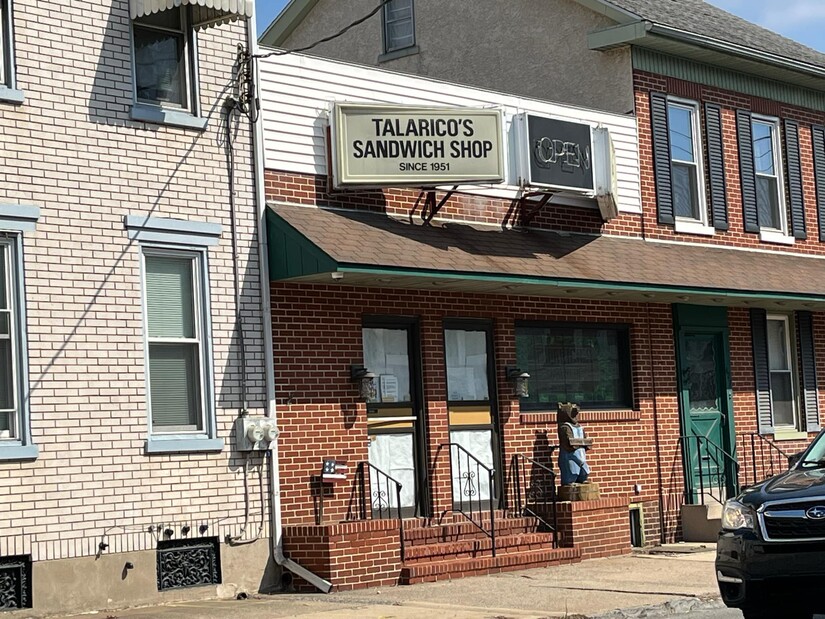
At Screpesi’s, the sandwich builders were too busy to be interviewed. As I was walking out the door, I called out to Michael Ostroski, the grandson of the original owner, “Hey, what do you think makes a great hoagie?”
“Love,” he responded back, with a sharp smile and a wink.
Our thoughts circled back to Tony’s of West Reading, where our hoagie adventure began. I had asked him what makes the perfect hoagie, expecting a lesson in meat progression and vegetable separation.
“What makes a hoagie great is the person enjoying it and the people you are eating it with.” Tony, our sandwich guru, had it all figured out.
* Mike Strzelecki is a freelance travel and outdoor writer, and 1981 graduate of Boyertown Area Senior High School. He writes from his house in Baltimore, Maryland. In his spare time, he joins his wife on adventures around the country observing and photographing birds.